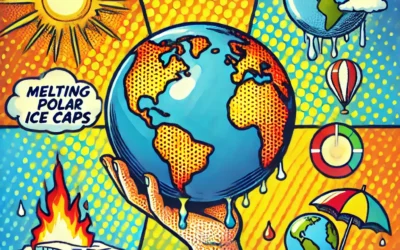Biodiversity Land Cover Change: What Is It and Why Does It Matter?
Biodiversity is the variety of life on Earth, from genes to ecosystems. It supports the functioning of natural systems and provides many benefits to humans, such as food, water, medicine, recreation, and cultural values. However, biodiversity is under threat from human activities, especially changes in land use and land cover (LULC).
What is LULC and how does it affect biodiversity?
LULC refers to the physical characteristics of the Earth’s surface, such as forests, grasslands, wetlands, croplands, urban areas, and water bodies. LULC changes are the conversions of one land cover type to another, such as deforestation, urbanization, or agricultural expansion. LULC changes can have direct and indirect impacts on biodiversity, such as:
- Loss of natural and semi-natural habitats, which reduces the area and quality of living space for many species.
- Fragmentation of habitats, which isolates populations and disrupts ecological processes.
- Alteration of ecosystem functions, such as nutrient cycling, water regulation, and carbon sequestration.
- Introduction of invasive species, which compete with native species and alter ecosystem dynamics.
- Emission of greenhouse gases, which contributes to climate change and affects the distribution and survival of species.
According to the OECD, Land Cover Change is the best measure available to monitor pressures on terrestrial ecosystems and biodiversity. The OECD has developed a suite of indicators that track LULC change over time in a globally consistent manner.
What are the main trends and drivers of LULC change?
The OECD indicators show that between 1992 and 2015, the world lost 4.3% of its natural and semi-natural vegetated land, equivalent to an area larger than India. The main drivers of this loss were the expansion of cropland (40%), built-up area (30%), and bare land (20%). The regions with the highest rates of vegetation loss were South America (8.9%), Africa (7.6%), and Asia (5.2%). On the other hand, the world gained 0.6% of natural and semi-natural vegetated land, mainly due to the increase of tree cover (60%) and grassland (30%). The regions with the highest rates of vegetation gain were Europe (2.6%), North America (1.8%), and Oceania (1.4%).
The main drivers of LULC change are the growing human population and the increasing demand for food, energy, natural resources, economic development, and space. These drivers are influenced by various factors, such as policies, markets, technologies, institutions, and behaviors. For example, agricultural policies can affect the incentives for land conversion, trade can affect the demand and supply of commodities, and urban planning can affect the density and sprawl of cities.
What are the implications and challenges of LULC change for biodiversity conservation?
LULC change poses a serious threat to the conservation of biodiversity and the provision of ecosystem services. According to the IPBES, LULC change is the most important direct driver of biodiversity loss in terrestrial ecosystems, and is projected to remain so until 2050. The IPBES also estimates that LULC change has reduced the global extent of natural ecosystems by 47% since the pre-industrial era, and has contributed to the extinction of at least 680 vertebrate species since 1500.
The challenge of LULC change for biodiversity conservation is to balance the competing demands for land among different sectors and stakeholders, while ensuring the protection and restoration of natural habitats and the maintenance of ecosystem functions. This requires integrated and adaptive approaches that consider the trade-offs and synergies among multiple objectives and scales. Some of the possible solutions include:
- Promoting sustainable land management practices, such as agroforestry, conservation agriculture, and organic farming, that enhance soil health, biodiversity, and productivity.
- Implementing spatial planning and zoning tools, such as land-use maps, land-use scenarios, and land-use regulations, that guide the allocation and use of land resources according to environmental and social criteria.
- Expanding and strengthening protected areas and other effective area-based conservation measures, such as community conserved areas, indigenous reserves, and private reserves, that safeguard key habitats and species.
- Restoring degraded lands and ecosystems, such as forests, wetlands, and grasslands, that improve biodiversity, carbon storage, and resilience.
- Enhancing the valuation and payment of ecosystem services, such as carbon sequestration, water purification, and pollination, that provide incentives for land users to conserve and restore natural capital.
Conclusion
Biodiversity land cover change is a complex and dynamic phenomenon that has significant implications for the future of life on Earth. It is essential to monitor, understand, and address the causes and consequences of LULC change for biodiversity conservation and human well-being.






